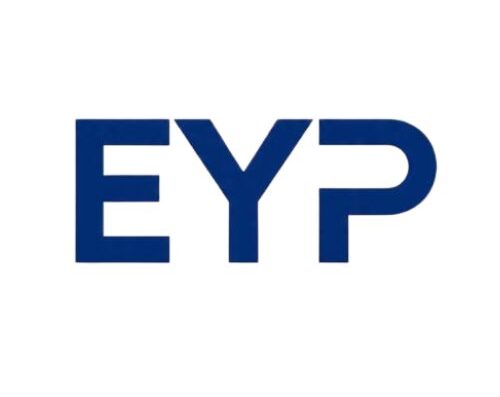When the words “benefits increase” and “DWP” appear in the same sentence, the entire UK welfare landscape immediately sits up and takes notice. The reason is simple: every time there’s even a whisper of additional support or top-up income for low-income households, disabled claimants, carers, pensioners, and those receiving means-tested benefits, it rapidly becomes a nationwide conversation that dominates kitchen tables, social media feeds, and political debates alike.
In today’s economic climate, benefit shortfalls, relentless inflation pressure, skyrocketing childcare costs, persistent food price hikes, and unprecedented rental spikes mean that most households across the United Kingdom are currently operating on financial margins so impossibly tight that a few hundred pounds doesn’t just make a difference—it literally determines whether families can survive the month ahead. The gap between income and essential expenses has become a chasm that swallows any sense of financial security.
The Public’s Memory: The UK Has Been Paid Before
Before we cast our eyes forward toward June 2025 and what it might potentially bring, we absolutely must look backward at the established precedent. Understanding history provides the foundation for predicting future government action.
It’s critically important to remember and acknowledge that Britain has a thoroughly documented, provable historic pattern when it comes to emergency financial support:
When inflation spiked dramatically → targeted one-off cost of living payments were strategically created and distributed.
When energy bills exploded beyond affordability → carefully targeted winter cash boosts were issued to vulnerable households.
When the poorest households felt economically strangled, additional DWP lump sum payments were rapidly introduced as immediate relief.
In straightforward terms: The United Kingdom has already established major precedent by creating substantial one-off DWP support payments in recent years, deploying them as an effective governmental tool to instantly relieve dangerous social and economic pressure building among the population.
This historical pattern matters tremendously.
This documented governmental behaviour means that the fundamental idea of another significant cash injection arriving in mid-2025 isn’t pure fantasy, wild conspiracy theory, or clickbait speculation. It’s actually completely aligned with the established behavioural history and crisis response mechanisms of the UK government when facing comparable economic pressures.
The government has demonstrated willingness to act when circumstances demand intervention.
Furthermore, June specifically is traditionally recognized as a tactically significant month within governmental financial planning cycles, sitting at the crucial intersection between several major fiscal and political events:
- The complete impact of the previous tax year becomes fully visible
- Summer parliamentary recess budgetary considerations begin
- Mid-year Consumer Price Index (CPI) uplifts and adjustments occur
- New parliamentary cycles and political positioning strategies commence
This timing creates a unique window for policy announcements that can shape public perception and provide relief before winter pressures intensify.
Why June 2025 Is Financially Important
June 2025 isn’t simply “another month” on the calendar—it represents a convergence of multiple significant financial and political factors that create extraordinary pressure for governmental action.
There are three highly specific, interconnected reasons that place June 2025 firmly under the economic and political spotlight:
1) The April 2025 Uprating Will Have Already Played Out
All major annual benefit increases across the entire welfare system happen systematically in April each year, following established governmental procedure. This represents the single largest adjustment point in the benefits calendar.
However, by the time June arrives, the general public will have lived through two complete months experiencing the genuine real-world purchasing power (or devastating lack thereof) delivered by those April increases. The gap between the percentage increase announced and the actual relief felt by households becomes painfully apparent.
If April’s uprating proves insufficient against continued price increases—and early economic forecasting suggests this is highly probable—then June becomes the logical moment when political pressure for additional intervention reaches critical mass. The government cannot ignore two months of data showing families still struggling despite the annual increase.
2) June Is Where Energy Forecast Recalculations Hit Consumer Pricing
Energy market dynamics operate on forward-looking cycles, with energy price cap announcements and comprehensive winter forecast modelling being published and refined during this precise period. Households across the nation begin receiving increasingly clear projections regarding their expected heating and electricity costs for the approaching winter months.
This creates a psychologically and financially critical moment. When families realize that despite government promises, their energy bills will remain crushingly high or potentially increase further, public anxiety transforms into vocal political pressure demanding immediate action.
Historical analysis demonstrates that this specific timing—when winter cost forecasts solidify while summer budgets are still flexible—consistently triggers intensified demands for governmental support payments. The government has previously responded to precisely this pattern by announcing emergency support during summer months to address winter preparedness.
3) Political Timeline: Pre-Autumn Policy Positioning
June occupies strategically vital territory within the political calendar, sitting immediately before the intensive period when autumn welfare policy direction gets drafted, debated, and ultimately locked into place for the following year’s legislative agenda.
Offering meaningful financial support during June can fundamentally transform public sentiment, media narratives, and political momentum before the crucial autumn political messaging becomes set in stone. It provides the government with positive momentum heading into traditionally contentious budget season.
From a purely strategic political perspective, a June payment announcement allows the government to demonstrate responsiveness and compassion during a period when such gestures carry maximum impact, potentially influencing public opinion for months afterward while the actual payment distribution occurs.
Who Would Be the Most Likely Beneficiaries?
If a genuine £750 cash boost payment transitions from speculation into actual confirmed policy documentation and receives full governmental approval and funding allocation, it will almost certainly follow the identical target group logic and eligibility criteria established by previous emergency support payments.
Based on comprehensive analysis of past distribution patterns, the most probable beneficiary categories would include:
1. Means-Tested Benefit Claimants
This represents the largest single recipient group and includes households currently receiving:
- Universal Credit (UC) in any amount
- Job Seekers Allowance (JSA) – specifically income-based rather than contribution-based
- Employment and Support Allowance (ESA) – income-based category
- Pension Credit – both Guarantee Credit and Savings Credit components
- Income Support for specific protected groups
2. Disabled Claimants
Individuals receiving disability-related benefits regardless of other income sources:
- Personal Independence Payment (PIP) at either standard or enhanced rates
- Disability Living Allowance (DLA) for existing claimants not yet migrated
- Adult Disability Payment (ADP) for Scottish residents under devolved administration
- Attendance Allowance for older disabled individuals requiring care support
3. Pensioners
State Pension households represent one of the demographics most severely impacted by persistent inflation, particularly those without substantial additional private pension income or savings buffers.
These three distinct demographic blocs collectively represent the most significant public pressure points where financial distress is most acute, most visible, and most likely to generate political consequences if left unaddressed by government intervention.
The selection of these groups isn’t arbitrary—it’s carefully calculated to provide maximum relief to those experiencing genuine hardship while maintaining some degree of fiscal restraint on overall programme costs.
But Will It Get Approval?
This question cuts to the absolute heart of whether speculation becomes reality. Understanding the competing pressures provides insight into the actual probability of implementation.
The Economic Case FOR a One-Off Mid-Year Payment in 2025:
Current economic indicators and projections present a compelling argument for intervention:
Food inflation trajectory: While headline inflation rates may show technical softening in percentage terms, food prices specifically are unlikely to fully reverse their accumulated increases. Families are permanently paying significantly more for basic groceries than two years ago, with no meaningful price reductions on the horizon.
Energy pricing structural elevation: Despite periodic fluctuations, energy costs will almost certainly remain structurally elevated far above pre-crisis levels throughout 2025 and beyond. The fundamental market dynamics supporting lower prices simply don’t exist in current geopolitical and infrastructure investment contexts.
Housing cost acceleration: Both mortgage costs for homeowners and rental prices for tenants continue experiencing severe upward pressure. Interest rate policies affect mortgages directly, while rental markets face supply shortages driving relentless price increases that consume ever-larger portions of household income.
Uneven wage growth distribution: While aggregate wage statistics might show growth, the benefits distribute extremely unevenly across income brackets. Lower-income workers—precisely those receiving benefits—see minimal real wage improvements that fail to match their cost-of-living increases.
These factors combine to create an environment where household financial distress persists despite official claims of economic stabilization.
The Political Case FOR a One-Off Mid-Year Payment in 2025:
Beyond pure economics, political calculus strongly favours intervention:
Delivery speed advantage: One-off support payments can be designed, approved, funded, and distributed far faster than comprehensive structural welfare reforms, which require years of planning, legislation, and system modification. When political pressure demands visible action quickly, lump sum payments provide the fastest response mechanism available.
Positive polling performance: Historical data consistently demonstrates that direct cash support payments test extraordinarily well in public opinion polling across all demographic groups and political affiliations. They represent tangible, understandable help that voters can directly experience.
Pre-winter strategic intervention: Announcing and delivering support before winter arrives helps reduce the traditional autumn panic cycle where vulnerable households face impossible choices between heating and eating, generating negative media coverage and political criticism.
Electoral positioning value: Regardless of when the next general election occurs, demonstrating concrete support for struggling families creates positive political capital and neutralizes opposition criticism about governmental indifference to poverty.
The Case AGAINST It:
However, significant countervailing pressures exist that could prevent approval:
Treasury fiscal discipline pressure: Finance ministry officials consistently push for reducing emergency spending programmes, arguing that the government must transition away from crisis-mode economics and return to sustainable fiscal frameworks with controlled expenditure.
Structural reform arguments: Policy advisors and think tanks argue for permanent system improvements rather than continued reliance on temporary one-off payments, suggesting that repeated emergency payments represent failed governance rather than responsive support.
Political vulnerability to criticism: Opposition parties and media commentators might successfully frame a June 2025 payment as transparent “temporary vote buying” rather than genuine concern for struggling households, potentially creating political damage rather than benefit.
Precedent concerns: Each additional one-off payment establishes stronger public expectation for future payments, potentially creating an unsustainable cycle where the government feels compelled to provide repeated emergency support indefinitely.
The ultimate decision balances these competing considerations against real-time economic data and political polling as June 2025 approaches.
Why the Story Is Gaining Traction So Early
It’s currently only late 2024 as this is being written—and yet we’re already witnessing viral discussions, intense speculation, and widespread conversation throughout communities about potential mid-2025 financial support.
This early emergence of the topic reveals something profound about the current cultural and economic moment:
Households Are Planning Survival a Year Ahead
This represents a fundamental shift in how ordinary families approach financial management. People are actively budgeting and planning for 2025 already, not because they’re unusually forward-thinking or financially sophisticated, but because they have absolutely no choice given current circumstances:
Rising debt levels: Household debt accumulation continues accelerating as families bridge the gap between income and expenses using credit cards, overdrafts, and personal loans. Planning ahead becomes essential to avoid complete financial collapse.
Astronomical rent increases: Annual rent renewal negotiations now routinely involve increases of 10-20% or more in many areas, forcing tenants to plan months in advance how they’ll possibly afford their housing or where they might relocate if costs become impossible.
Persistent financial distress: The economic pressure on lower and middle-income households isn’t easing despite official optimism. The lived experience contradicts political rhetoric, forcing families to adopt survival mentalities typically associated with genuine poverty.
This early attention to potential 2025 support reflects desperation more than hope—families need to know what resources might become available because they’re already making impossible choices about 2025 expenditures.
So What Should Households Actually Do Right Now?
Given this complex landscape of possibility mixed with uncertainty, here is honest, practical, responsible advice for households trying to navigate this situation:
1) DO NOT Financially Rely on Any Future £750 Payment Until the Government Officially Confirms It
This cannot be emphasized strongly enough. While historical precedent suggests such payments are possible and economic conditions might warrant them, possibility is not certainty.
Treat any potential payment purely as a possible bonus if it materializes, never as guaranteed income to be incorporated into your essential budget planning. Making financial commitments based on unconfirmed speculation could lead to catastrophic consequences if the payment never arrives.
2) Track Official DWP Press Releases Every 30 Days
The government consistently telegraphs major policy changes approximately six months before actual execution and implementation. This provides advance warning for those paying attention.
Set calendar reminders to regularly check official sources:
- Gov.uk DWP announcements section
- Official government press release channels
- Parliamentary written statements and debates
Avoid relying exclusively on social media, forums, or secondary news sources, as these frequently spread misinformation or misinterpret genuine announcements.
3) If You Are Eligible for Pension Credit — Check Eligibility Immediately
This carries particular urgency. Many previous one-off payment programmes in recent years specifically required recipients to already be receiving certain qualifying benefits on a precisely defined qualifying date specified in the legislation.
If you’re potentially eligible for Pension Credit but haven’t yet claimed it, beginning that claim process immediately creates eligibility protection. Even if processing takes weeks or months, your claim date typically serves as your entitlement date, potentially qualifying you for future payments that require benefit receipt.
Thousands of eligible pensioners miss substantial payments simply because they haven’t claimed benefits they’re legally entitled to receive. Don’t let administrative delays cost you hundreds or thousands of pounds.
4) Document Every Monthly Cost Increase
Maintain detailed personal records tracking your actual household expenditure changes across all categories:
- Food shopping receipts and cost comparisons
- Energy bills month-by-month
- Rent or mortgage payment changes
- Childcare cost increases
- Transport and fuel expenses
- Essential medication and health costs
If the government opens public consultations about welfare policy or support payments—which frequently occurs before major policy changes—real citizens presenting real documented numbers carry massive influence in policy debates. Your personal evidence matters far more than abstract statistics.
Additionally, this documentation serves your own interests by creating clear evidence if you need to access emergency support, negotiate with creditors, or demonstrate financial hardship in any formal context.
Final Takeaway
June 2025 is genuinely shaping up to be a potentially pivotal month within the UK welfare landscape—politically, economically, and socially. Multiple converging factors create conditions where government intervention becomes not just possible, but potentially probable.
The United Kingdom possesses a clear, documented historic track record of strategically deploying one-off support payments as effective pressure valves to control and reduce dangerous public economic stress before it transforms into social instability or political crisis.






